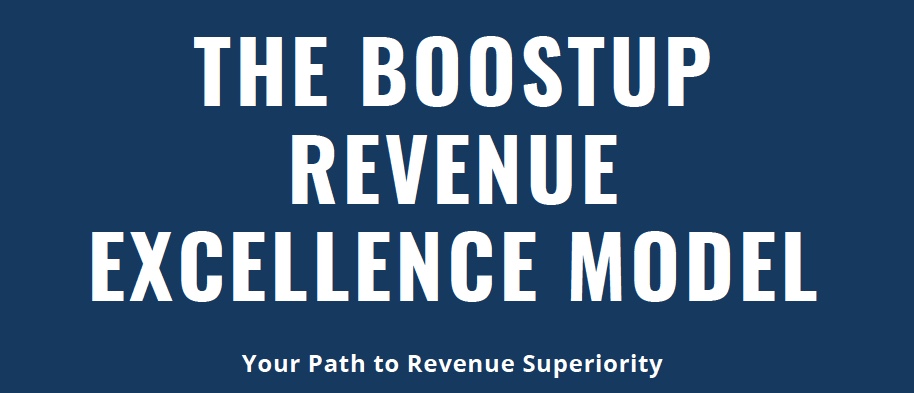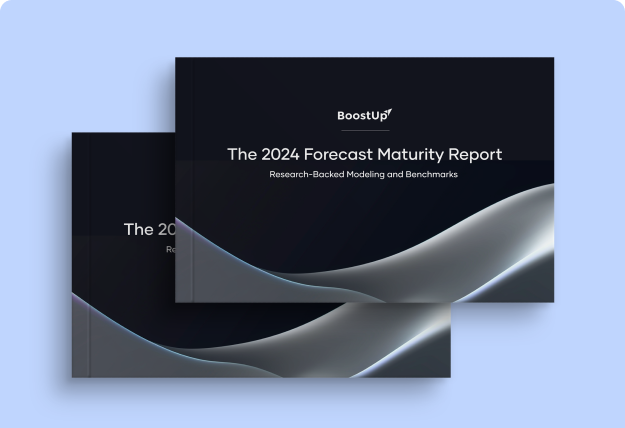The Revenue Blog /
Achieving Revenue Excellence in 2021: Key Takeaways from the Webinar.
Achieving Revenue Excellence in 2021: Key Takeaways from the Webinar.

Topics covered in this article
Reach RevOps Success with This Model.
Sales, marketing, and customer success teams no longer work in a vacuum. The modern-day advances in technology, computing power, and work culture have combined to create a new era. Revenue operations have become the revenue engine for many organizations.
It provides operational oversight, strategic alignments, new data, and new tools to sales, marketing, and success teams, making them more effective and efficient. The results are obvious, companies with a revenue team are 34 percent more profitable than comparable organizations without RevOps.
Now 60 percent of B2B organizations either already have a RevOps strategy, or are in the process of building one, it’s time we stop saying everyone needs RevOps, and start asking how to improve, optimize, and grow a RevOps program. Enter Revenue Excellence, the ultimate goal of a Revenue Operations team. What exactly is it? How can it be achieved?
Mallory Lee, Senior Director of Revenue Operations at Terminus, and Sharad Verma, Co-Founder and CEO of BoostUp recently held a webinar to first discuss the true meaning of Revenue Excellence and cover the BoostUp Revenue Excellence Maturity Model, which seeks to provide a roadmap to Revenue Excellence for any organization.
Revenue Excellence Defined.
First, what exactly is Revenue Excellence? According to Sharad, it is made up of three components, data, tools, and processes.
- Data: The world of revenue runs on information. The better the data, the better decision the decisions that can be made.
- Tools: There are more tools than ever in the sales category. The selection of the right tools is absolutely crucial. Tools must fully integrate and be aligned with the organization’s goals. Ops needs to create systems from these tools that are a combination of people and platforms that can drive their success.
- Processes: Sales is an unstructured function, therefore sales processes, coaching processes, and forecasting processes are necessary to create consistency and predictability across the organization. The best processes are simple, structured, and easy to follow.
Revenue Excellence is the optimization of these three categories that ultimately leads to the most accurate, complete, and usable data, analyzed by the best possible tools, and utilized through the most efficient processes.

The Roadmap to Revenue Excellence.
The journey to Revenue takes place across three functions. The main functions of Revenue Operations are forecast management, opportunity management, and sales rep management, and each of these evolve through four stages.
Forecast Management
Forecast management refers to the forecasting done by sales or revenue leaders. They utilize the data generated by the sales teams in order to predict future outcomes for resource planning, allocation, and goal setting.
- Stage 1: Forecast management starts at the elemental level. Organizations here may not have a CRM at all, and if they do, it is the most basic version. Information is recorded in spreadsheets, and forecasts are made manually. In stage one, all data entry is manual, which leads to inconsistent, incomplete, and inaccurate information.
- Stage 2: Organizations with a basic business intelligence tool find themselves in stage two. These tools provide point-in-time data that can be used to build forecasts based on historical information, but the forecasting is still done manually.
- Stage 3: When a company installs AI, they advance to stage three. Here, the platform can analyze data and assist in the prediction of future outcomes based on prior performance. No longer is the forecasting done manually, but it still relies on input and gut feelings.
- Stage 4: Stage four is forecasting nirvana. In this step, not only does an organization use a predictive AI, but it has a platform that is capable of understanding the greater context surrounding a sales conversation, as well as the conversation itself. The platform can actually analyze written emails, spoken conversations, and the results of those interactions to search for patterns and accurately predict whether or not a deal will close.
Opportunity Management
Opportunity management refers to the sales activities that are collected against their specific accounts. It can be used to analyze the pipeline on a deal-by-deal basis to track progress against goals, as well as judge sales performance.
- Stage 1: In stage one, data collection is entirely manual. The team is totally dependent on the front-line reps who are performing the activities to accurately record them, which rarely happens. This yields data that is unreliable cannot be used for accurate forecasting or analysis.
- Stage 2: Next, stage two brings automation. This greatly improves data reliability and frees hours of sales rep time so they can focus on selling rather than recording data.
- Stage 3: Stage three is the introduction of automated analysis. Data is not just being collected automatically, but a platform is analyzing it, comparing it against goals, and creating visualizations. Here, where sales teams see data and can ask, what does this mean? They can make massive improvements to processes and strategies with actionable insights.
- Stage 4: In stage four, the ability to calculate risk is introduced. These platforms can not only analyze data but can predict if a deal will close or not. They can predict when a deal will close, how much of the pipeline is at risk and prescribe actions that can reduce that risk.
Sales Rep Management
Sales rep management is the ability to capture, understand, and improve the performance of individual sellers. Sales coaching is a massive part of sales team performance, and revenue operations help improve its effectiveness.
- Stage 1: An organization in stage one will only be able to rank reps based on prior quota attainment. This is called a lagging indicator since it is calculated entirely off of previous performance. They will have little to no insight on how a rep is performing in the current quarter, other than self-reported data and “gut” feeling.
- Stage 2: In stage two, the company has gained leading indicators. Thanks to the automated activity capture and a more advanced CRM, they can look into the sales funnel and judge performance based on the recorded activities.
- Stage 3: As they progress into stage three, the company no longer solely focuses on the volume of activities, it now starts thinking about the quality of those activities. Engagement and frequency of engagement are measured to judge the rep based on the connections they build with their clients. This is where true sales coaching can happen because you have insights into what actually happens within the interactions.
- Stage 4: In stage four, the ability to predict future outcomes reigns king. Organizations can predict how a rep will perform in the coming quarters and can see what can be done in order to improve that performance. They can see how much business they will book, how many meetings they will have, and how much revenue they can expect for any given rep.



-Photoroom.png)